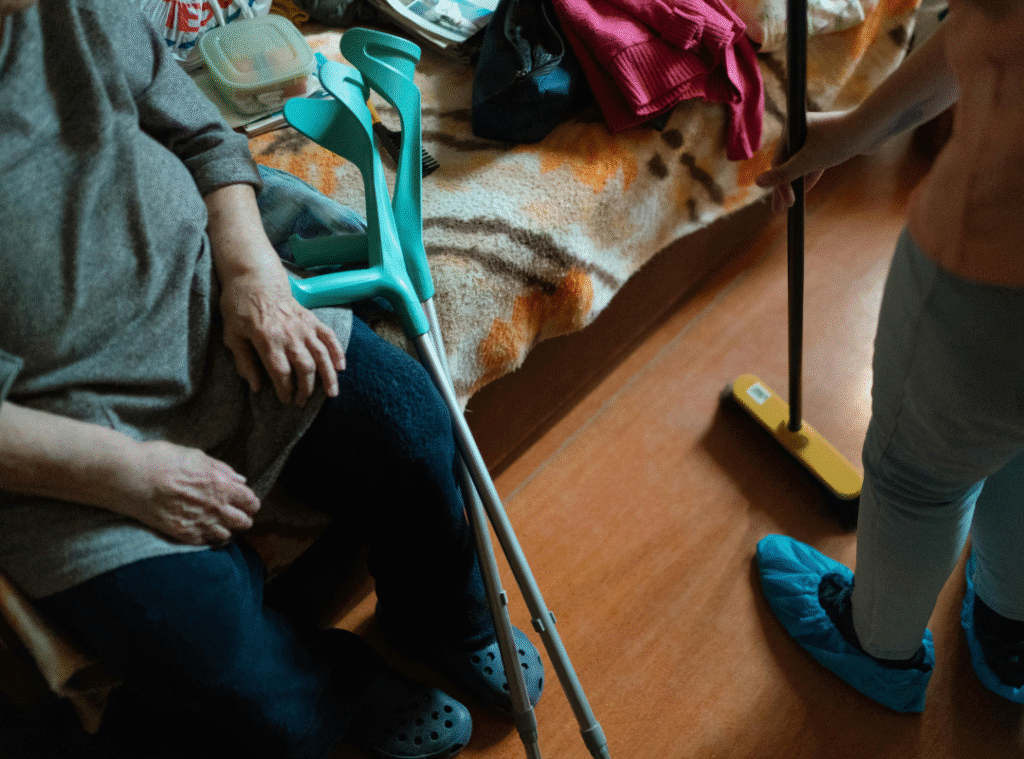What Does Assisted Living Provide for Seniors?

What Does Assisted Living Provide for Seniors’ Needs?
Understanding what assisted living provides is key when making decisions about long-term care for yourself or a loved one. Today’s assisted living communities go far beyond basic care—they offer a supportive, secure environment where residents can maintain independence while enjoying services tailored to their health, social, and emotional needs.
From personal care and housekeeping to meals and engaging activities, assisted living provides a lifestyle that promotes dignity and comfort. Whether you’re exploring senior living for the first time or comparing options, learning about the assisted living requirements and benefits will help you make informed choices that support a better quality of life.
The Core Services of Assisted Living Communities
When evaluating what assisted living provides, it’s essential to understand the standard services you can expect in these communities. Assisted living supports individuals who may need help with activities of daily living (ADLs) such as bathing, dressing, medication management, and mobility assistance. These services are designed to be non-intrusive, encouraging as much independence as possible.
At MD Senior Living, residents enjoy 24/7 access to caregivers, nutritious meal plans, transportation services, wellness programs, and on-site medical care coordination. These amenities make daily life easier while promoting physical and emotional wellness.
What Is Assisted Living vs Nursing Home?
One common question is: what is assisted living vs nursing home? Understanding the difference is crucial. Assisted living offers a residential setting with supportive services for seniors who are mostly independent but need occasional help. In contrast, nursing homes provide round-the-clock medical care and supervision for individuals with serious health conditions.
What does assisted living provide that sets it apart? It offers flexibility, a home-like environment, and personalized care plans that adjust as needs evolve, unlike nursing homes, which are more clinical and geared toward intensive care. Knowing this helps families choose the most appropriate level of support.
Learn more from A Place for Mom for an in-depth comparison.
Social Engagement and Lifestyle Enrichment
Social connection plays a big role in senior wellness. One of the most meaningful aspects of assisted living is the opportunity for consistent social engagement. Residents participate in activities like group fitness classes, arts and crafts, live entertainment, and local excursions.
These communities cultivate a vibrant lifestyle with structured programs and casual interactions that help prevent loneliness and cognitive decline. Facilities often include shared dining spaces, game rooms, libraries, and gardens to encourage resident interaction. For example, communal dining provides both nutrition and community.
Who Qualifies for Assisted Living?
Another frequently asked question is: Who qualifies for assisted living? Typically, individuals who require help with one or more ADLs but do not need complex medical care are ideal candidates. A healthcare assessment will determine whether a senior can live safely in an assisted living setting.
What does assisted living provide to qualified residents? A safe, supportive space where their physical, emotional, and social needs are met without the constraints of institutionalized care. If your loved one is still mobile and mentally alert but struggles with household tasks or medication schedules, they may benefit from this environment.
Visit NIH’s National Institute on Aging for additional details on eligibility and care levels.
Personalized Care That Evolves
One of the significant benefits of assisted living is the focus on evolving, individualized care. At MD Senior Living, residents receive personalized care plans tailored to their medical, emotional, and lifestyle needs. These plans are routinely reviewed and adapted based on health evaluations, feedback, and changing conditions.
Services often include medication reminders, support for chronic illnesses, mobility aids, and coordination with external healthcare providers. For residents with dementia or Alzheimer’s, specialized memory care options are available (learn more here).
Safe and Secure Living Environments
Safety is paramount in assisted living. From fall prevention and secured entrances to emergency call systems and trained staff, every element is designed for protection and peace of mind. What does assisted living provide in terms of safety? A structured, monitored space that prevents accidents and ensures immediate help when needed.
24/7 staff availability and emergency response technology create a strong safety net. Additionally, the presence of supportive staff promotes emotional reassurance. For families, this level of safety provides confidence in their loved one’s care and comfort.
Variety of Services and Amenities
Residents in assisted living enjoy a wide range of services that go beyond healthcare. Common amenities include:
- Housekeeping and laundry services
- Transportation for appointments and outings
- Nutritious chef-prepared meals
- On-site salons, fitness centers, and libraries
- Outdoor spaces like patios or walking paths
What does assisted living provide in daily life? Comfort, convenience, and the freedom to focus on hobbies, relaxation, and socializing. This comprehensive lifestyle supports the mental and physical well-being of every resident.

How Does Assisted Living Work Financially?
A common concern is the financial aspect of assisted living. These communities usually charge a monthly fee that covers room, board, care services, and amenities. Costs can vary significantly based on location, unit type, and level of care.
What does assisted living provide for that fee? A comprehensive care package that includes both support and hospitality. While Medicare does not typically cover assisted living, some long-term care insurance, veterans’ benefits, or Medicaid waivers (which vary by state) may help offset costs.
Families are encouraged to consult a financial advisor and explore programs like Medicaid’s Home & Community-Based Services for assistance.
What Does Assisted Living Mean?
Let’s clarify a common question: What does assisted living mean? Assisted living refers to a type of senior housing that bridges the gap between independent living and nursing home care. It “means” offering just enough help, without taking away autonomy.
What does assisted living provide in terms of meaning? A sense of purpose, support, and belonging. It embodies dignity, choice, and peace of mind for seniors and their families.
Investing in a Fulfilling Lifestyle
Choosing assisted living is not just about care—it’s about creating a life of comfort, community, and purpose. Understanding what assisted living provides helps you see beyond the basics. These communities offer physical support, emotional connection, personal freedom, and safety under one roof.
Whether you’re learning about what assisted living is vs nursing homes, exploring how assisted living works financially, or wondering who qualifies for assisted living, MD Senior Living is here to guide you. Their team is committed to helping your loved one live with dignity and thrive in a caring environment.
Explore more at https://mdseniorliving.com/ or schedule a tour today.
Frequently Asked Questions
What do most assisted living facilities provide?
Most assisted living facilities offer assistance with daily activities, including bathing, dressing, medication management, and meal preparation. They also offer housekeeping, transportation services, and social activities to promote engagement and well-being. Many communities include amenities like fitness centers, communal dining, and 24-hour staff support. The level of care can vary, but the goal is to support independence while ensuring safety, comfort, and well-being.
What is the downside of assisted living?
One downside of assisted living is the high cost, which is often not covered by Medicare. Some residents may also struggle with the transition, especially if they feel a loss of independence. There can be variability in the quality of care depending on the facility. Additionally, assisted living may not provide enough medical care for residents with advanced health conditions.
How long do most people stay in assisted living?
The average stay in an assisted living facility is around 22 to 28 months. Many residents eventually transition to nursing homes when their care needs increase. However, some may stay longer if their health remains stable and the facility meets their needs. The length of stay often depends on individual health and financial circumstances.
What do you pay for in assisted living?
In assisted living, you typically pay for housing, meals, and basic services like housekeeping and transportation. Additional costs may include personal care, medication management, and specialized care services. Some facilities offer tiered pricing based on the level of assistance needed. It’s important to understand the pricing model, as costs can vary widely between communities.






Leave a Comment